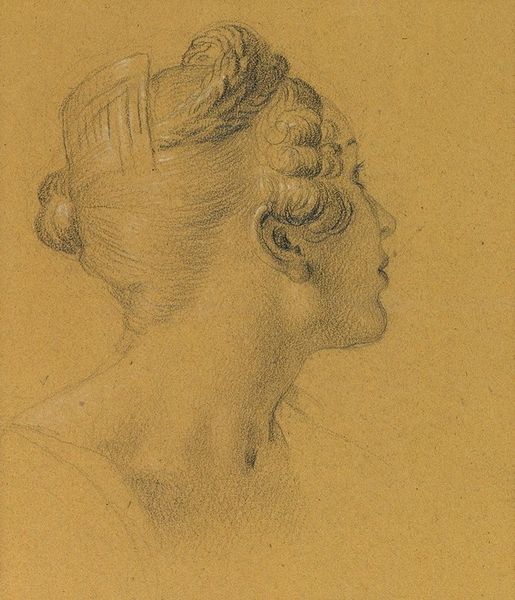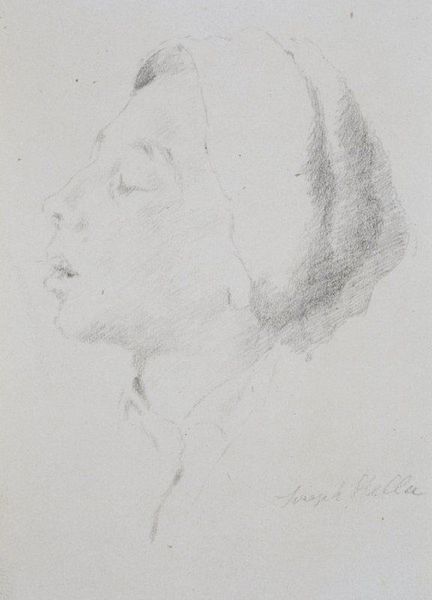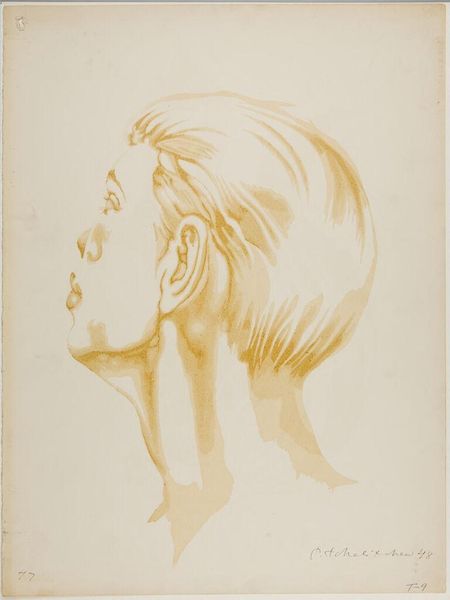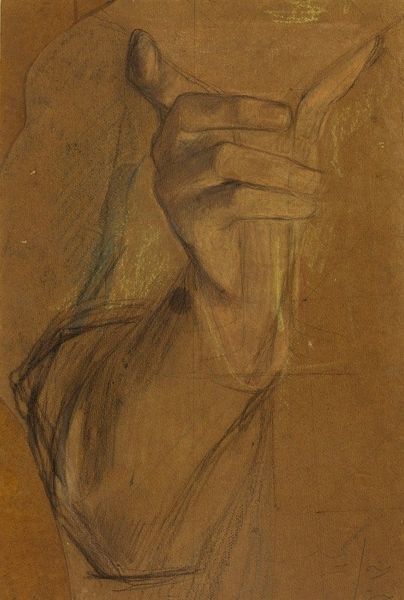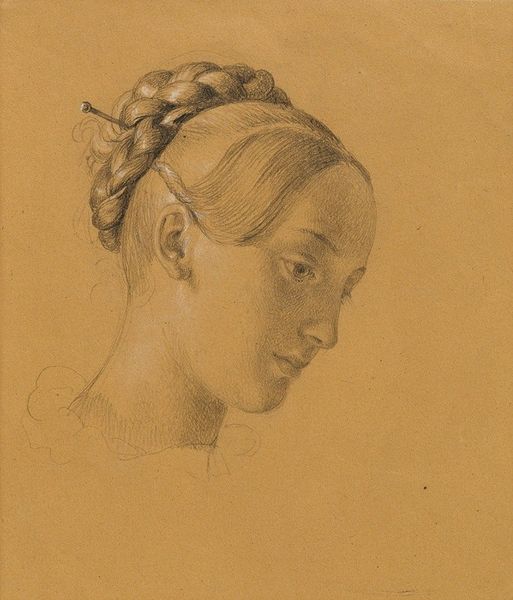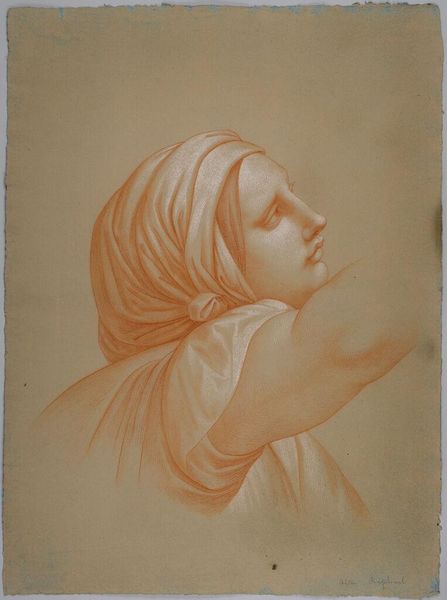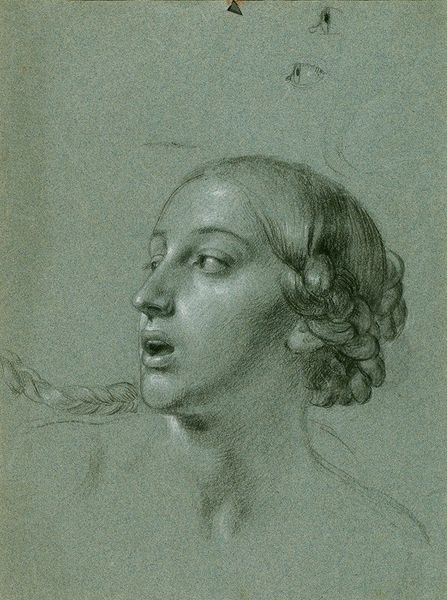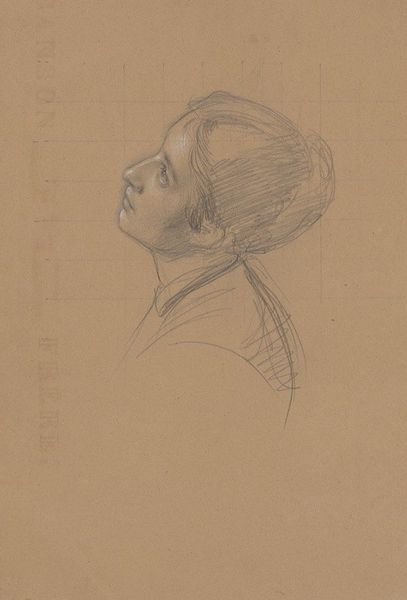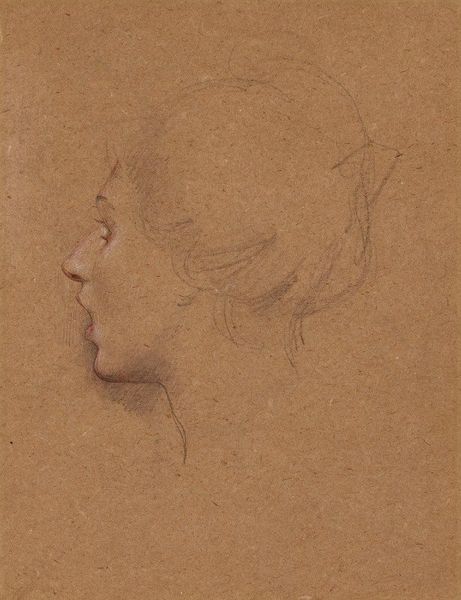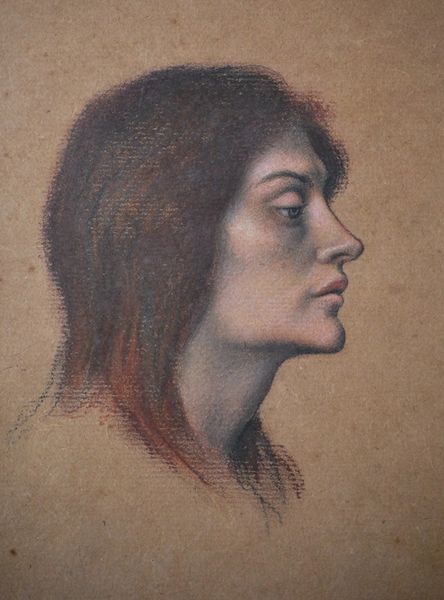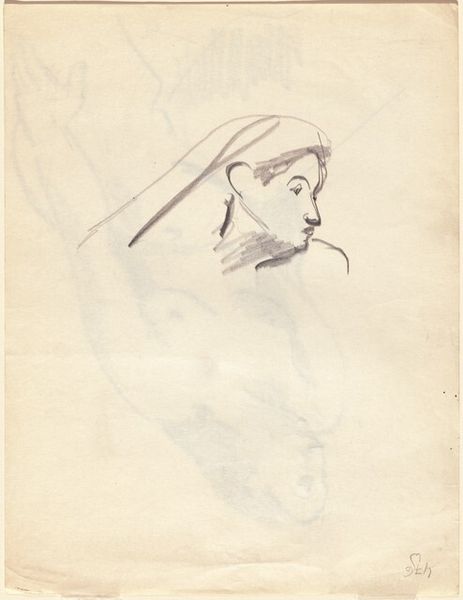
drawing, dry-media, pencil
#
portrait
#
drawing
#
dry-media
#
romanticism
#
pencil
#
portrait drawing
#
pre-raphaelites
#
portrait art
Copyright: Public Domain: Artvee
Edward Burne-Jones drew this head of hope with chalk on paper, sometime in the late 19th century. It’s a study, meaning it was made to prepare for a larger painting. And as such, it's a glimpse into Burne-Jones's method. He was associated with the Arts and Crafts movement, which emphasized handcraft and the value of the handmade in response to industrialization. The drawing material itself – chalk – speaks to this interest. It’s a direct medium, allowing for a close connection between the artist’s hand and the image. The red paper gives the drawing a warm, soft glow, while the chalk allows Burne-Jones to create delicate gradations of light and shadow. Look closely and you'll notice the subtle hatching and cross-hatching that define the contours of the figure’s face and neck. Burne-Jones’s choice of medium reminds us that even in the age of mass production, there’s still a place for the individual touch, for the slow, deliberate work of the hand. By focusing on materials and making, we can gain a richer understanding of the social and cultural values embedded in this beautiful drawing.
Comments
No comments
Be the first to comment and join the conversation on the ultimate creative platform.
